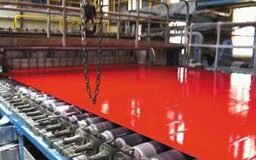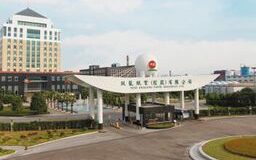Machine Learning and Improved Performance
As the cost of computational power comes down, Machine Learning and Industrial Analytics will play a larger role in helping mills trim costs and run more effectively.
DAVID ALMAGOR
The pulp and paper industry has demonstrated remarkable resiliency during challenging periods. With mostly limited growth opportunities in mature markets, pulp and paper manufacturers in Western Europe and North America are focusing on improvements in operational efficiencies and production utilization rates.
According to global management consulting firm McKinsey & Company, digitalization will play a major role in transforming the industry and can potentially reduce the cost base of a producer by 15 percent. McKinsey estimates that half of that (7.5 percent) is attributable to Artificial Intelligence and Analytics. This article covers how Machine Learning and Industrial Analytics can impact key areas of operational performance metrics. Specifically, we will discuss the following three topics:
1. Operations & Maintenance (O&M)
2. Occupational Health and Safety (OHS)
3. Plant asset life
A BIT OF BACKGROUND
Traditionally, Machine Learning was a subject mainly confined to academia. This has changed in the last few years along with the surge in commercial applications. How did this change occur?
Perhaps the largest driver has been the significant fall in the underlying cost of computational power as well as data storage and transfer. Another contributing factor is innovation in the areas of Artificial Intelligence and Big Data. Finally, Industry 4.0 and Smart Factory initiatives have gained executive sponsorship as senior management recognizes the potential impact in terms of revenue and cost savings.
A typical industrial plant contains thousands of sensors embedded in machine equipment. Although data is generated on a continuous basis, much of it is not accessible for analysis or other operational purposes. With the limited exception of supervisory control and data acquisition (SCADA)-based monitoring, most sensor data provide little if any value to the mill.
SCADA monitoring is typically performed on a small number of high priority machine assets. Control thresholds are manually set and when the threshold is breached (temperature, vibration, pressure, etc.), technicians are alerted. In some cases, the systems can automatically trigger further action.
Machine Learning for Industrial Analytics applies algorithms to the massive amounts of data generated from the industrial plant. These algorithms are trained to detect anomalous behavior patterns and correlations of patterns. The SCADA system monitors whether a control threshold has been breached; Industrial Analytics based on Machine Learning analyzes all data, regardless of whether rules-based thresholds have been breached. Based on pattern recognition, the algorithm can signify degradation, potential failure, and the reasons thereof.
There are several different approaches to using Machine Learning for failure detection. The classic approach is referred to as Supervised Machine Learning. The algorithm is trained on the underlying production asset using data labels or classifications. After the algorithm is “trained” it can classify new data based on the labels. For example, if there is a specific data pattern for asset degradation, the algorithm will apply this label to new data if it detects this pattern.
One drawback to this approach is that training the algorithm takes time and money. The algorithm needs to “learn” each unique failure pattern on a per-asset basis. This typically requires expertise from maintenance and reliability personnel at a facility level. If the model is not adequately trained, it can generate a high number of false positives and false negatives. The consequence is performing unnecessary maintenance work or missing potential failures.
An alternative is the Unsupervised Machine Learning methodology. Using Advanced AI, the algorithm recognizes data patterns without receiving prior training on the underlying asset. Vast amounts of data are analyzed and the algorithm itself generates the label.
It is important to understand the differences between the methodologies because there is a practical application. Unsupervised Machine Learning is less resource intense, thereby cutting the costs of Industrial Analytics solutions based on this methodology.
OPERATIONAL & MAINTENANCE: UNTAPPED POTENTIAL FOR
COST SAVINGS
Pulp and paper is a highly automated industry that uses complex machinery. According to CEPI, in 1992 the European Pulp and Paper industry employed 411,113 people. By 2016, that number had dropped to 177,065 people, representing a decline of 43 percent. At the same time, paper and board production rose from 65.1 metric tpy to 90.9 metric tpy.
According to the Central Pulp & Paper Research Institute, maintenance costs account for 10 percent of sales in the industry, a significantly higher rate than for the engine manufacturing, car manufacturing, or chemical industries (Fig. 1).
Unscheduled downtime is a major cost driver for the paper and pulp industry as well as other manufacturing sectors. In a survey of 200 executives commissioned by industry supplier Honeywell, unscheduled downtime was ranked a top threat to maximizing revenue. Interestingly, 42 percent of respondents admitted to running equipment harder than they should.

(Source: Central Pulp & Paper Research Institute.)
Paper and pulp companies do not share internal data about the cost of unplanned downtime; however, published reports based on estimates indicate that the per-hour cost for a failed machine could top US$10,000. Machine downtime is extremely costly, especially when lost revenue opportunity cost is considered.
One of the most compelling rationales for using Machine Learning for asset maintenance is that it identifies machine failures that were previously undetected by existing asset monitoring systems. Pulp and paper plants rely primarily on rule-based SCADA monitoring. These systems monitor data from machine assets to identify early warning of potential failure. The equipment OEM or the plant’s engineers provide upper and lower threshold control limits for the sensor data. If these thresholds are breached, then an alert is triggered.

The major disadvantage of SCADA systems is that they cannot detect potential failure in instances where the manually set thresholds were not breached. Figure 2 provides an example of a SCADA monitoring system of asset temperature. If the asset’s temperature exceeds 40 degrees, an alert is triggered; but the system also detects abnormal sensor behavior that occurs within the threshold bandwidth. In this example, we see indications of anomalous sensor behavior. With Machine Learning, the algorithm will analyze this data to determine whether there is a pattern of anomalous behavior that could indicate machine degradation or asset failure.
MANUALLY CONFIGURED RULE-BASED ALERTS
Within the pulp and paper industry, Reactive Maintenance is the norm. Machines “run-to-failure,” followed up by unplanned downtime while repairs occur. The underlying assumption for using this run-to-failure approach is that (a) machine failure is considered a random event and (b) plants lack predictive tools.
Reactive Maintenance is expensive because it costs significantly more to fix a broken machine than it does to repair a machine that is still operating. With Machine Learning that detects anomalous machine behavior, reactive maintenance is reduced with positive outcomes of financial significance.
How do cost savings occur? Better planning improves “wrench time” metrics. Replacement parts can be ordered and repair crews schedules can be optimized. Advanced notice alleviates the pressure (and cost) of moving repair crews to urgent tasks. With early warning, machine workloads can be reduced while waiting for parts, without the need for abrupt shutdowns. Furthermore, with Machine Learning solutions that provide Root Cause Failure Analysis, maintenance crews have a clearer picture of why the machine is failing. The result: less trial and error and more effective maintenance.
In addition, pulp and paper manufacturers can also reduce the cost of time-based Preventive Maintenance (PM). Time-based maintenance is based on historic failure patterns. For instance, certain assets tend to follow failure patterns based on age. The so-called bathtub curve shown in Fig. 3 maps average failure rates for many electro-mechanical components and motors. The assumption is that during break-in and wear-out stages, failure rates are relatively high. Focusing maintenance work during periods where maintenance has historically failed could prevent this failure from occurring.
This approach uses average historic data to define current maintenance schedules; but without knowledge of specific degradation, there is a risk and cost of over-maintenance. With Machine Learning, the decision to repair a specific piece of machine equipment is based on sensor data about the particular asset and is not a human-made decision based on trends or educated guesses.
MACHINE LEARNING AND OHS
To its credit, the pulp and paper industry has demonstrated considerable commitment to improving Occupational Health and Safety (OHS) in both North America and Europe. In 2003, the European industry, with its worker unions, adopted a target of “zero accidents.” In the US, the Bureau of Labor Statistics reports that pulp and paper has a relatively low injury rate: 2.8 non-fatal injuries per 100 employees in 2016. Although there is still opportunity for further improvement, this compares with an incidence rate of 6.5 recorded in 2000.


Fig. 1: Maintenance costs are especially high within the pulp and paper industry.
(Source: Central Pulp & Paper Research Institute.)
How does Machine Learning improve employee safety? The reduction of maintenance activities and particularly Reactive Maintenance correlates positively to the reduction in safety related incidents. Figure 4 shows that, when 75 percent of maintenance is reactive, the incidence of maintenance technician lost-time injuries is 12 times higher than when only 25 percent of maintenance is reactive. With Machine Learning, sensor data is used to detect degradation and upcoming failure so that maintenance activities occur with sufficient time to remediate without the pressure of lost production.
HOW MACHINE LEARNING EXTENDS MACHINE ASSET LIFE
Based on industry data, machine assets in North America and parts of Western Europe tend to be older than those of their competitors in Asia and other emerging markets. For instance, in North America, the technical age of half the recovery boilers is at least 30 years (Fig. 5).

(Source: Poyry Forest Industry Consulting.)
Machine Learning helps extend the life of a machine asset due to two factors. First, machines can now be repaired prior to failure and repairs are based on the specific root cause of failure. Second, mills can avoid redundant over-maintenance, which typically includes conducting unnecessary preventive maintenance for fear of unplanned shutdowns. (Of course, these factors do not mitigate against harmful practices such as equipment abuse—overusing equipment or not using equipment for its designed use.)
FUTURE OUTLOOK
In the past, the pulp and paper industry has demonstrated flexibility and resilience during challenging periods of heightened competition and external threat. Based on its track record, we expect the industry to embrace Machine Learning as a lever to improve its operational and financial position.
Dr. David Almagor is chairman of Presenso and is an author of more than 40 publications and a co-author of five patents. He holds a Ph.D. EE and M.S.EE from the University of California, San Diego and a B.S.EE from the Technion, Israel Institute of Technology. Learn more at presenso.com.




